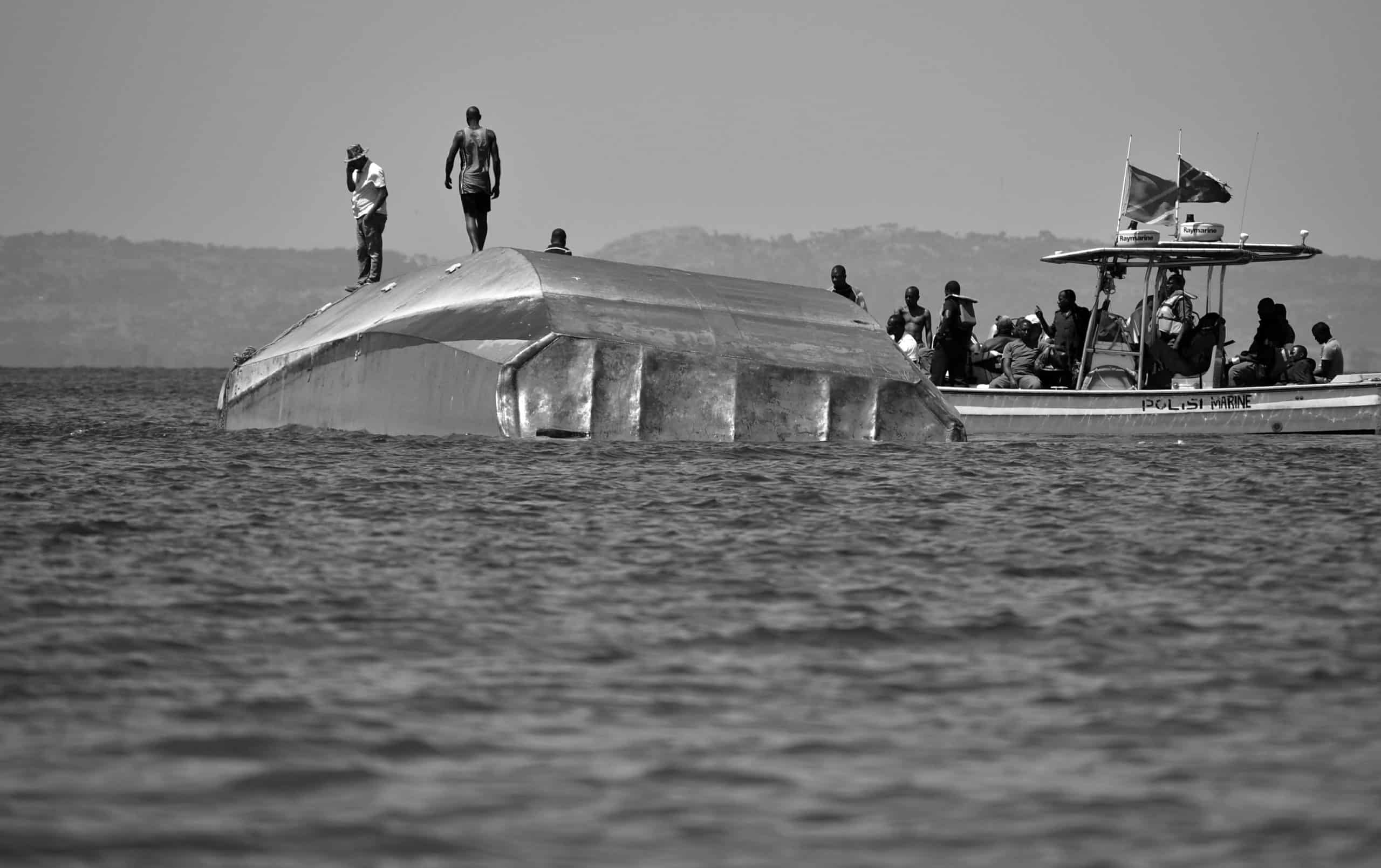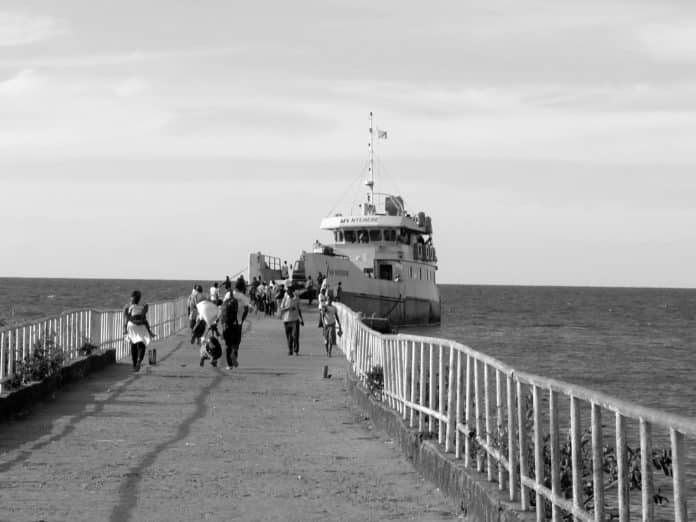MV Nyerere Ferry: Vessel, Incidents, Reactions, Consequences and More
The MV Nyerere ferry was a Tanzanian vessel that sank on Lake Victoria on September 20, 2018, while sailing between Ukara Island and Ukerewe Island. According to the Tanzanian authorities, 228 passengers died because of this accident, while 41 people were saved. The sunken ferry was successfully righted, rescued, and emptied more than a week after the incident.
Over 400 children were separated from their parents/guardians as a result of the accident.
Vessel
TEMESA (Tanzanian Electrical, Mechanical and Services Agency), the owners and managers of the ferry, said the boat had a total capacity of hundred people, 25t of freight, and 3 cars when it first set sail in 2004. The organization further disputed that MV Nyerere ferry had mechanical issues, claiming that it had recently undergone extensive maintenance, including repair on its 2 engines.
Incident
Sinking of MV Nyerere Ferry
On September 20, 2018, the boat was transporting people and a cargo of corn, cement, bananas, and a tractor, from Bugolora (Ukerewe Island) to Bwisya (Ukara Island). MV Nyerere ferry sank 160 feet (50m) from the port where it was supposed to dock in the Ukerewe District in the afternoon.
Ruben Mpande and Ochori Burana, 2 survivors of the shipwreck, said MV Nyerere ferry’s captain, who had been talking on his phone, made a fast turn after realizing he was docking on the wrong side of the vessel. Burana told TBC1 (the state broadcaster), “People were begging him to put down the phone and concentrate on the wheel. As we reached the Ukara pier, we noticed that he was moving to the left side, whereas the disembarking area was on the right. He abruptly turned around.” Mpande continued, “The vessel dived to one side after the quick turn, throwing people and goods overboard, and then went down with everyone else on board when it twisted to the other side. I dove into the lake and swam to the beach.”

Tanzania’s President, John Pombe Magufuli, delivered a speech in which he stated that the person driving the MV Nyerere ferry was untrained and that the true captain was not on board. An eyewitness on the beach, however, told Emmanuel Makundi (France24 reporter) that “Many people attempted to rush the gate as the boat approached the coast, causing a car onboard the vessel to go over. As a result, the vessel began to list to one side, resulting in the disaster.” Jennifer Idhoze, another survivor, “claimed the ship capsized as it was overcrowded.”
Passengers
Officials first suspected that MV Nyerere ferry was carrying more than 400 people, 4 times the vessel’s listed maximum capacity. Because the passenger recording gear was lost during the accident, the exact number of people is unknown.
The ticket-issuing official drowned, and the machine that kept track of the number of travelers was lost in the wreck. Initial estimates showed that the boat was carrying far more than 300 passengers, with some sources claiming that the number was around 400.
37 people were retrieved in the immediate MV Nyerere ferry aftermath, according to the government and the police, and rescue activities were halted until the next day. The following day, during a press conference about the tragedy, President Magufuli revealed a casualty figure of 131 people, with 40 people being carried ashore to safety. Police and army divers have been dispatched to the wreck as part of the rescue mission to look for the dozens of people who remain missing. Eng. Augustine Charahani was discovered living in an air pocket in the engine cabin after rescuers detected noises more than 40 hours after the disaster.
Magufuli increased the death toll to 224 on September 23, 2018, three days after the sinking, and confirmed his earlier request for the management’s detention while also announcing the detention of the ship’s captain. One week after the disaster, the government issued official figures stating that “near to 270 passengers” were on board when the MV Nyerere ferry overturned, with 228 of the deceased and 41 rescued.
Righting
Despite MV Nyerere ferry’s capsizing, it did not sink. Given the incident’s proximity to the pier and the shallow waters surrounding it, a team of Mwanza engineers and the People’s Defense Force of Tanzania (TPDF) began a righting effort to retrieve the vessel. The vessel was tipped on its side on September 25, 2018, with a complete recovery expected within 7 days of the report. The vessel was safely righted, rescued, and dragged ashore on Ukara Island to be emptied on September 28, 2018. An investigation into the possibility of repairing and reusing the ferry has begun.
Reactions and Outcomes
Immediate

In the aftermath of the capsizing, Magufuli voiced his sorrow and established 4 days of national mourning. He then directed the MV Nyerere ferry’s managers to be arrested, blaming them of extreme incompetence for overloading the ferry beyond its claimed capacity of 101 passengers. Opposition leader John Mnyika blamed the government for failing to improve ferry safety regulations and moving too slowly during the “inadequate” rescue mission.
A committee of 7 members was organized some days after the tragedy to investigate the reasons for the MV Nyerere ferry’s capsizing under the direction of General George Waitara, the past Chief of Defense Forces.
A unique bank account has been set up to accept donations in support of the disaster’s victims as well as provide some assistance to all those who have been affected. When the account was closed on September 29, 2018, close to TSH 900 million (400,000 US dollars) was collected; approximately 88,000 US dollars were used as condolence funds for the family members, approximately 105,000 US dollars was paid to the rescue crews – and about 210,000 US dollars was granted to the Bwisya Health Centre (Ukara Island) to construct 3 hospital centres for men, women, and children to assist the local residents. On Ukara Island, a memorial monument was to be erected.
The MV Nyerere ferry’s service to Ukara Island had been temporarily maintained by the small vessel Motor Vessel Ukara, which has a capacity of just 70 commuters and no freight. However, it was also revealed that a bigger vessel, the Motor Vessel Sabasaba, with a capacity of about 300 commuters, would take over the path after a few repair work.
Medium-Term
Caused by the loss of close relatives, more than 160 households sought therapy for PTSD (post-traumatic stress disorder). In addition, the tragedy orphaned more than 400 children (the precise number is unknown). The Tanzanian Red Cross Society provided assistance to these youngsters who needed food, shelter, schooling, and mental support to cope with their new position.
Two months after the MV Nyerere ferry accident, one surviving boat technician, who was trapped aboard the capsized vessel for more than two days before being saved, returned to work as a boat technician on the Motor Vessel Temesa. He expressed his gratitude for the opportunity.
For more articles related to Marine Transport in Tanzania click here!































